THE TRENCH was filmed entirely in Spain in 5 intense days in spring 2014 from the 24-28 april. To emulate the location of the lower Russian central plateau where the historic Battle of Kursk took place the production company chose the Catalan hills at St. Esteve de Palau Tordera in Montseny’s natural park, 25 miles north of Barcelona. It was here on a piece of private faming land in this green environment, that the battlefield was recreated and the trench – the true star of the film – was built .
The Shooting:
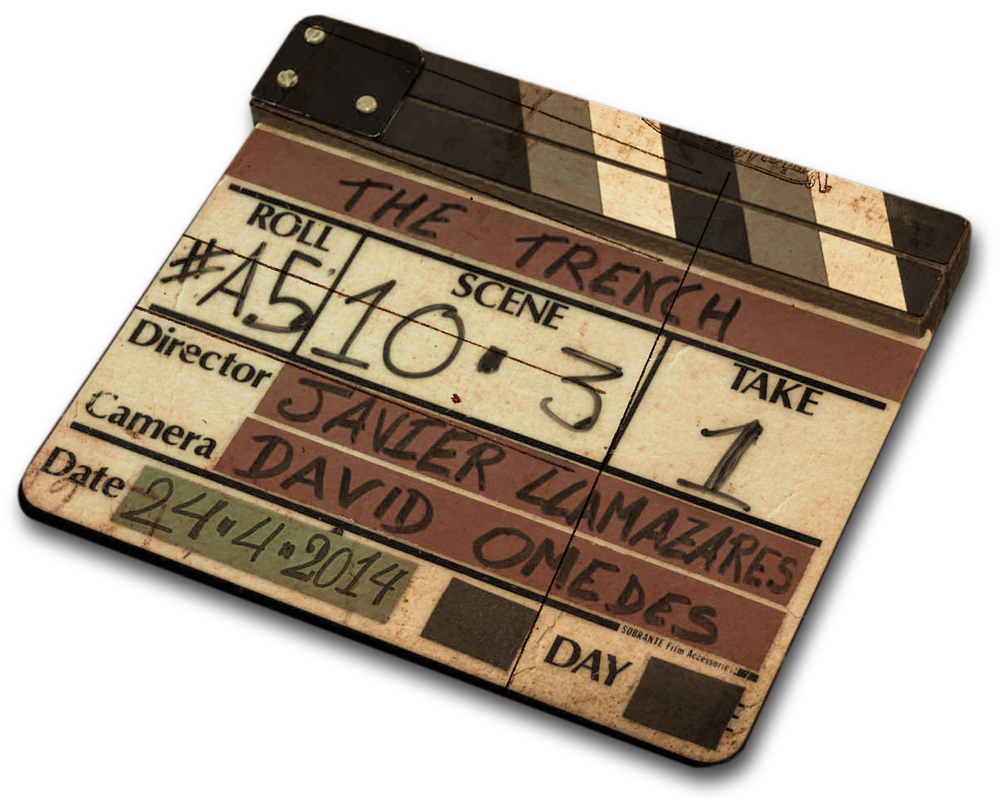
THE TRENCH:
For the construction of the trench and the correctness of the gypsy wagon, months of intensive research into the history was undertaken with a team of about a dozen experts in military history, art directors, toolmakers, painters, carpenters, builders and heavy-machine operators that would effectively give the form envisaged in the initial concept of the director. All this work was finalised in the last four intensive and difficult weeks of production before the shoot itself.
For the partial recreation of the battle which opens the film it was necessary to have a fortnight with the German regular soldiers of the Wehrmacht and the Red Army to rehearse together with meticulous instruction provided by the ACCUH – an association dedicated to historical reconstruction. Without their help this would have been impossible.
They took care of real special effects (explosives, smoke, real weapons and the making of dummy corpse), and with 3D digital effects in the post-production process.
We also had invaluable help due to the collection of antique vehicles of the period which were put at our disposal – for example the BMW R75, a German motorcycle and sidecar which appears in the opening battle scene.
THE TRENCH required a daily film crew of more than 50 people a day for the best part of 5 days shooting including two camera crews working simultaneously.
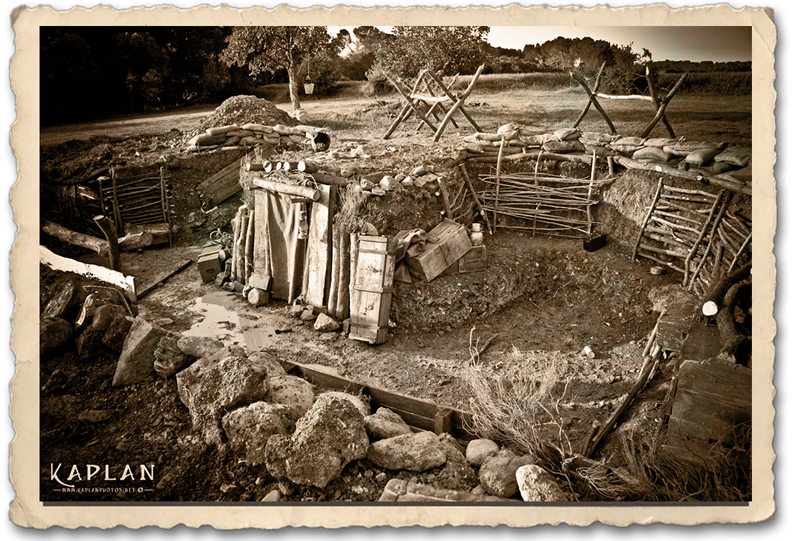
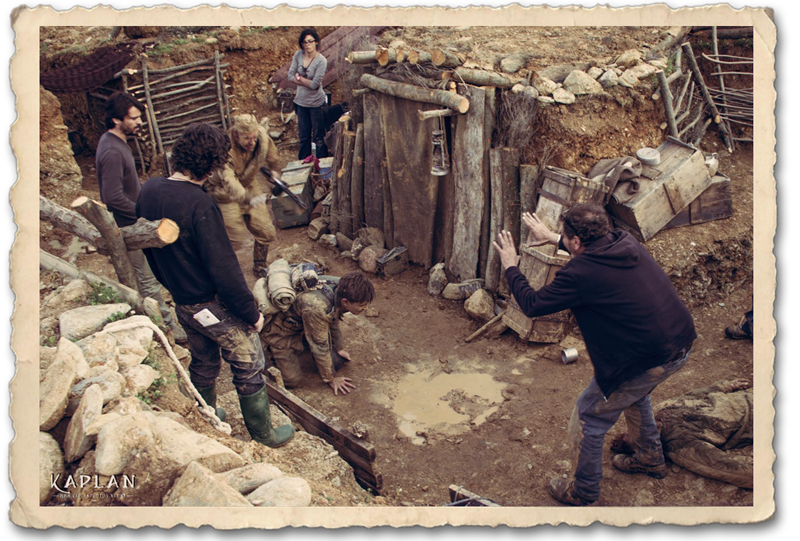
THE CREW:
The director recruited his crew from friends and dedicated co-workers to realise this risky undertaking. From the first discussions top professionals from Spanish film production became intensely involved. The composition of both artistic and technical crew were of utmost importance to the director, likewise his desire for a cordial and motivated work environment. The devotion and assurance of the technical crew is essential to allow the best of every participant to surface for the benefit of the film as a whole. Not just to make a movie but to experience the joys of teamwork.
The crew included important figures in the Spanish movie industry like the director of photography David Omedes, whose films as DP include (“Salvador”, “Pudor”, “The Pelayos“, “Cobardes”, “Lo mejor de Eva”)
The celebrated editor Nacho Ruiz Capillas responsible for the footage (“ The others”, “Los lunes al sol”, “Ágora”) . The composer Micka Luna creator of the special music in “Ingrid”, “Son & moon” “The Pelayos”.
The art-director Sylvia Steinbrecht responsible for artistic direction on “The gunman”, “Biutiful” “Perfume, the story of a murderer”. The sound designer and operator Fernando Acedo Abella and the magician of light and colour Claudio Güel and his fantastic team (“El Colorado”) famous for past movies like (“Camino”, “Salvador” “Princesas” and the celebrated “Blancanieves” an Oscar ® 2012 candidate)
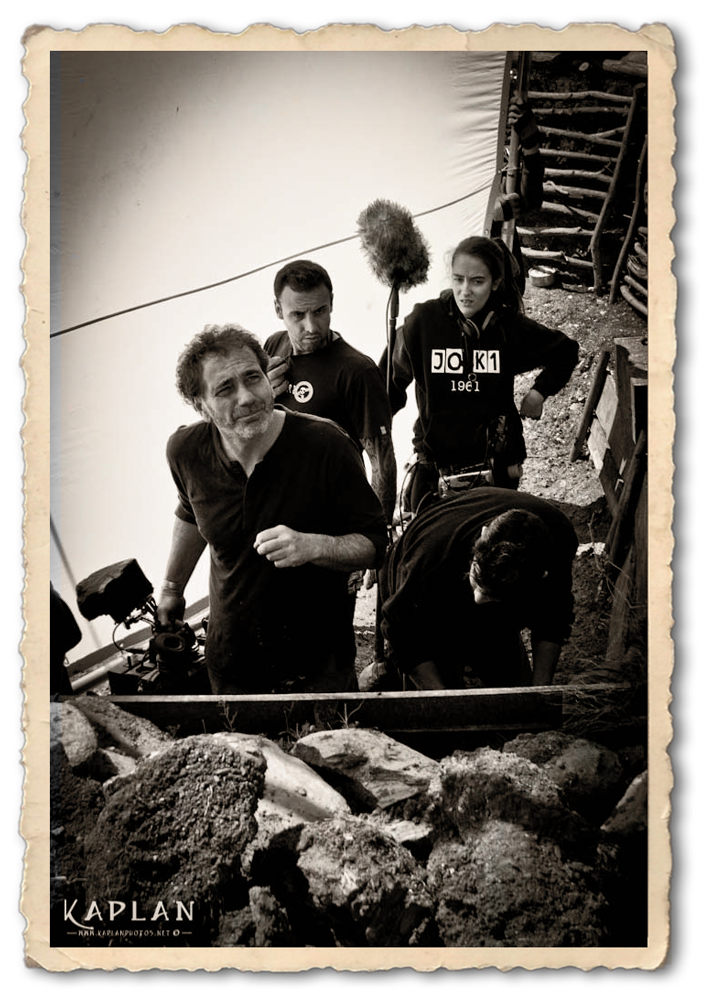
SHOOTING THE WAR:
THE VISUAL STYLE OF THE STORY
For the director Javier Llamazares, film has to accomplish the absolute reality in all its goals To hook the onlooker as much as give him a thrill. This is only realised by a strict technical perfection and sincere emotion in the intensity of the drama.
Nothing is gratuitous in the film. We attempt with this movie to be as faithful as possible to the authenticity of the period with costumes, make-up and the look of the film in a contrasting black and white by David Omedes our film photographer. It was our intention to reflect the tragic atrophy of body and mind of those who try to survive a war exhausted, wounded and filthy. To capture the shock level of those memorable photos of Robert Capa. This extreme and almost apocalyptic scenario was perfect to emotionally expose the two characters Oleg and Hans, two enemy soldiers face to face, lives apart, worlds apart, each isolated by his own language with a hellish war on their backs grown together to share cruel misfortune in the trench.
The black and white photography and the shaky hand-held camera style give it all a documentary feel, increasing the duress. The contention then is natural. OLEG (Johnny Melville) y HANS (Ruslan Alov) live their all. We go from the impersonality of the battle to the personal contact in the trench.. And it is here that the story really beings “a story of hope”.

THE CHOICE OF THE ACTORS:
THE SKIN OF THE CHARACTERS
The choices were not easy. From the beginning the director was clear he wanted all the language to be told in its original form: a basic need to sustain the drama between the characters to ensure the soldiers could never appear comfortable with each other. This feeling had to be clear for the audience and for that reason it was necessary to find actors who could take on the role in russian, german or romany.
To bring together actors of different nationalities to incarnate in roles like a rough ,Russian middle-aged peasant, a young german soldier and a group traveling gypsies from the mid 20th century was not so easy. But this challenge was met with the help of the intrepid Casting manager Beatriz Oliete who provided me with various suggestions in just a few days.
OLEG (Johnny Melville) the rough and rugged russian peasant mobilised for the Red Army was the first I found. HIs compelling physical presence and his extensive experience nade him the ideal candidate. He won a best actor in 2001 for the role of Harley in the Danish film (No Mans Land). In spite of the fact he knew no Russian and is essentially a comic actor, for me he was Oleg long before I even chose him, and with his assertiveness and power he also learnt all his texts in Russian and with a good accent. His work was skilful, colossal, with impressive physical power. He is without doubt one of the greats, an actor whose dedication makes him give his ‘all’ on set.
HANS, (Ruslan Alov) the spirited german soldier I chose through intuition and I was not wrong. Almost completely new to acting with little experience he behaved like a reasoned actor for the entire shoot. The entire crew had this general impression too. This young russian student of german language, who lives in Spain had such hunger and was so motivated that I decided to give him a chance. In rehearsal I did not see the this so clearly and became concerned by it. The director of casting warned me not to put too much on his young shoulders suggested other possibilities, but the first day of shooting it was quite clear that this young actor of some twenty plus years was impeccably professional and teamed well with Johnny (Oleg). I have zero regrets. Sometimes intuition works!
With respect to the gypsies on the wagon I have to say this was a great present from my casting director! Despite the negligible size of the roles, I had the luck to be again incredibly fortunate and some have since become close friends.
Abdelatif Hwidar (the silent, grim-faced gypsy on horseback) is a charming script-writer, director and actor already with a “Goya” prize for his short film “Salvador -story of a daily miracle” in 2006.” He is an all rounder with enormous potential, and spotless career which will see more successes in the years to come. His speech in Romany was the most extensive and complicated and he matched the challenge with skill.
Abdel Azziz El Mountassir; (the old sceptic and leader of the gypsies), is a delight. One of those strange enigmas that embodies the myth of the three “i’s” (integrity, intelligence and irony) but also with a sentimental shrewdness. He is n intellectual, an actor and a courageous writer who rejects anything that doesn’t please him but I think in the end I won a piece of his heart with my story although he didn’t tell me so. I realize that for him to get up on that ramshackle old cart and then speak a tricky speech in romany is already tough….I owe him so much gratitude as he remains one of the most convincing characters in the film.
Sfia Mohamed; (“Rocico” the young gyspy of the wagon) is also charming and a real musical talent, with an harrowing energetic voice, dominating the dance, the song and its interpretation with astonishing skill. The role of the young and innocent girl is well enacted as she sings a popular theme of the film “djelem djelem”, revised by the film’s music composer Micka Luna.
Remarkable is the presence of the other members of the Gypsy wagon; the young girls, the musicians, the boy pulling the horse, and the imposing presence of brawny giant played by actor Antonio de la Cruz. They all did really well.
Perhaps you can hear a slight accent at times in the language of the actors but without doubt I prefer to keep the original voices of the actors intact as a worthy tribute to their trade. Thanks from my heart to each and every one of you.
Javier Llamazares
Director & scriptwriter
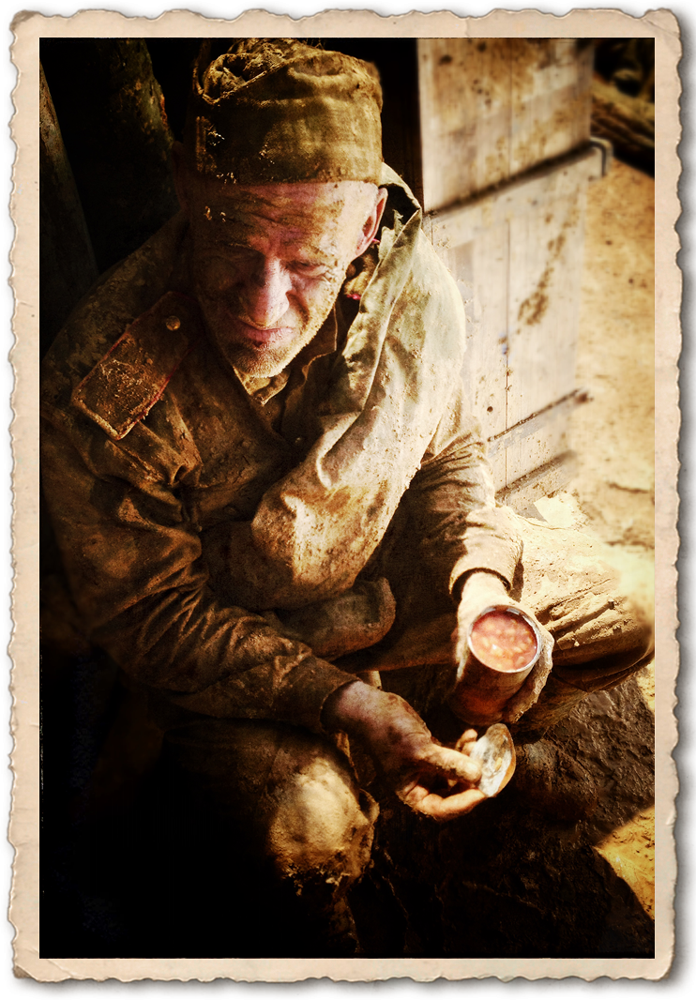

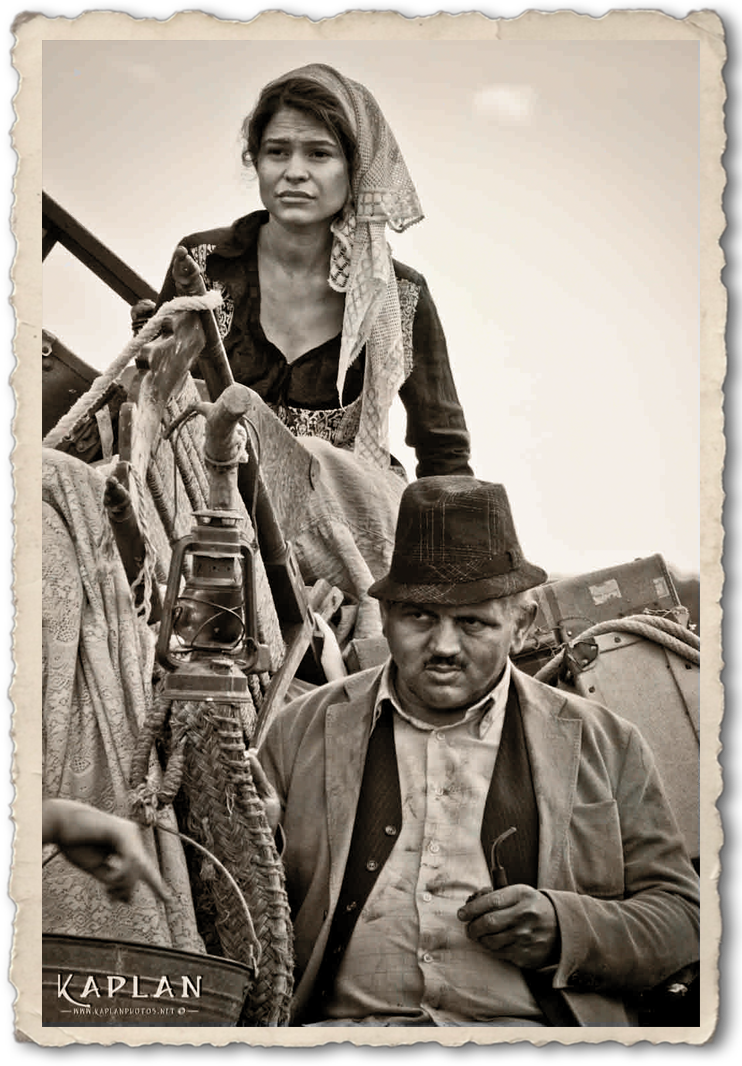


 English
English Spanish
Spanish